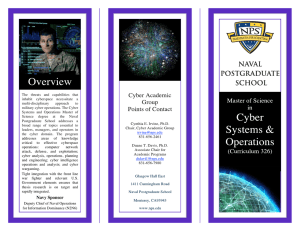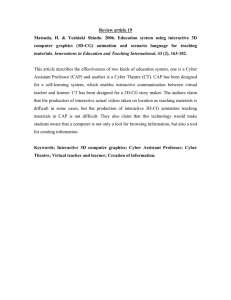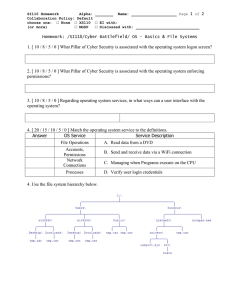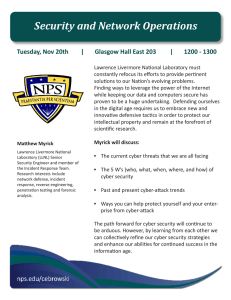Fact Sheet National Cyber Security Awareness Month
advertisement
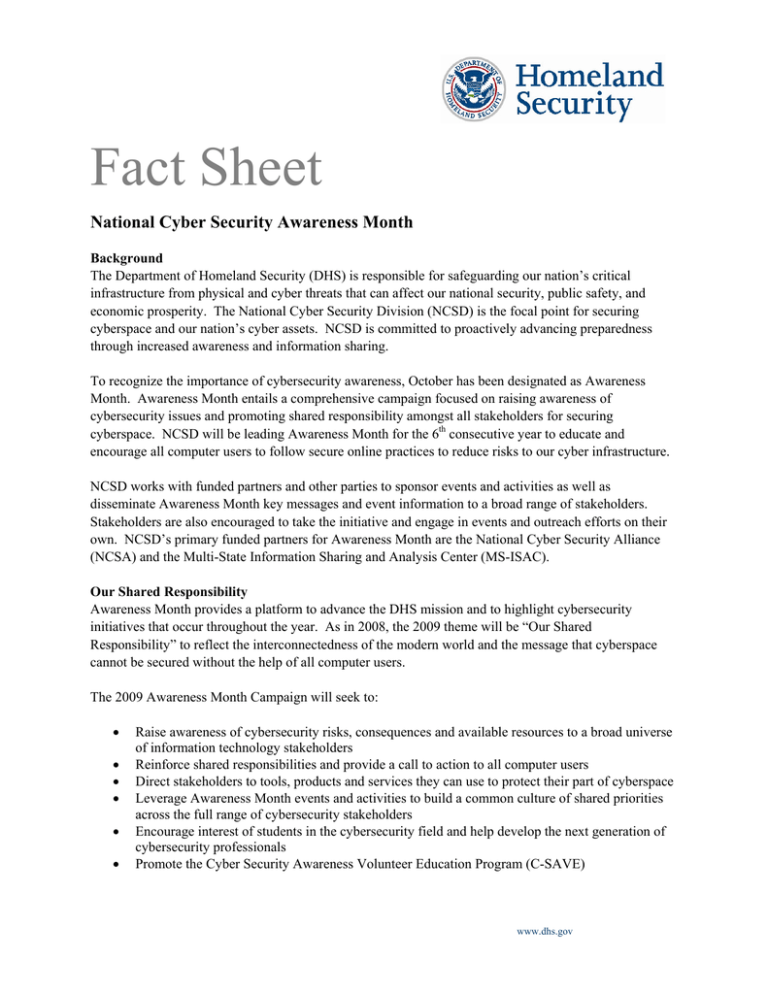
Fact Sheet National Cyber Security Awareness Month Background The Department of Homeland Security (DHS) is responsible for safeguarding our nation’s critical infrastructure from physical and cyber threats that can affect our national security, public safety, and economic prosperity. The National Cyber Security Division (NCSD) is the focal point for securing cyberspace and our nation’s cyber assets. NCSD is committed to proactively advancing preparedness through increased awareness and information sharing. To recognize the importance of cybersecurity awareness, October has been designated as Awareness Month. Awareness Month entails a comprehensive campaign focused on raising awareness of cybersecurity issues and promoting shared responsibility amongst all stakeholders for securing cyberspace. NCSD will be leading Awareness Month for the 6th consecutive year to educate and encourage all computer users to follow secure online practices to reduce risks to our cyber infrastructure. NCSD works with funded partners and other parties to sponsor events and activities as well as disseminate Awareness Month key messages and event information to a broad range of stakeholders. Stakeholders are also encouraged to take the initiative and engage in events and outreach efforts on their own. NCSD’s primary funded partners for Awareness Month are the National Cyber Security Alliance (NCSA) and the Multi-State Information Sharing and Analysis Center (MS-ISAC). Our Shared Responsibility Awareness Month provides a platform to advance the DHS mission and to highlight cybersecurity initiatives that occur throughout the year. As in 2008, the 2009 theme will be “Our Shared Responsibility” to reflect the interconnectedness of the modern world and the message that cyberspace cannot be secured without the help of all computer users. The 2009 Awareness Month Campaign will seek to: • • • • • • Raise awareness of cybersecurity risks, consequences and available resources to a broad universe of information technology stakeholders Reinforce shared responsibilities and provide a call to action to all computer users Direct stakeholders to tools, products and services they can use to protect their part of cyberspace Leverage Awareness Month events and activities to build a common culture of shared priorities across the full range of cybersecurity stakeholders Encourage interest of students in the cybersecurity field and help develop the next generation of cybersecurity professionals Promote the Cyber Security Awareness Volunteer Education Program (C-SAVE) www.dhs.gov 2008 Cyber Awareness Month Accomplishments The NCSAM annual campaign began in 2004 and has gained visibility and participation over the years. Each year builds upon the success of the previous years and 2008 was the most successful to date. Since its inception, Awareness Month has been formally recognized by the U.S. Senate, the U.S. House of Representatives, Federal, State and Local governments, industry leaders and academia. Awareness Month 2008 brought a new level of recognition to Cyber Month with a Presidential declaration of support. In partnership with NCSA and MS-ISAC, National Cyber Security Awareness Month 2008 yielded the following outcomes: • • • • • • • 42 events were held in 4 different countries (UK, Peru, Singapore, US) 3.9 million people (estimated) were reached through a national satellite media and radio media tours 171 print articles were published about NCSAM NCSAM received Presidential and Senate recognition 41 Governor’s signed NCSAM proclamations 46 private sector, non-profit, and universities endorsed NCSAM 500,000 young people, grades 7 – 12, were reached through NCSA sponsored USA Today lesson plans Additional Information Many of our partners are recognizing the value of awareness campaigns and are conducting outreach and awareness initiatives in coordination with the National Cyber Security Awareness Month efforts. For more information, please visit the following websites: • • • The National Cyber Security Division’s website provides an overview of the organization, including its strategic objectives. http://www.dhs.gov/xabout/structure/editorial_0839.shtm The National Cyber Security Alliance’s StaySafeOnline website provides free and non-technical cyber security information to the public. http://www.staysafeonline.info/ The United States Computer Emergency Readiness Team’s website offers a wealth of resources to our security partners and the public, including technical and non-technical tips, incident reports, and the latest cyber alerts. http://www.us-cert.gov 2
